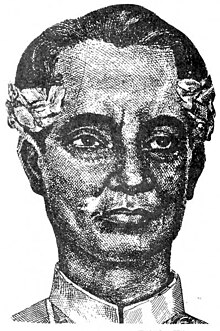Balagtasan


Balagtasan is a Filipino form of debate done in verse. Derived from the name of Francisco Balagtas also known as the Prince of Balagtasan, this art presents a type of literature in which thoughts or reasoning are expressed through speech.
The first balagtasan took place in the Philippines on April 6, 1924, created by groups of writers to commemorate the birth of Francisco Balagtas.[1] They made the first balagtasan with three sets of poets presenting a scripted defense. They based the form on earlier types of debates that also used poetic elements such as karagatan, huwego de prenda and, duplo.
Balagtasan is participated by two or more protagonists who engages in a debate on a selected subject. Each protagonist expresses their views in verse and with rhyming. Refutations shall also be done in the same manner. A judge, known as the lakandiwa if male or lakambini if female, will decide the winner of the balagtasan. The judge shall also announce the winner in verse and with rhyming. The participants are also expected to impress before a watching audience.[2][3][4] This is enlightened by the expression of poetic arguments but it can also provide entertainment through humor, extraordinary wit, and quasi-theatrical and dramatic expression.[5]
References
- ^ Edward Hirsch -A Poet's Glossary 2014 - Page 52 "The balagtasan, a poetic contest, developed in Philippine poetry in the second quarter of the twentieth century. It is named after Francisco Balagtas (1788–1862), “the father of Tagalog poetry,” and grew out of the popular folk form of the duplo."
- ^ De Leon, Mylah (August 24, 2013). "The timeless art of Balagtasan". Moonlighting. Retrieved September 28, 2015.
- ^ San Juan, Epifanio (1974). "Introduction". Introduction to Modern Pilipino Literature. United States: Twayne Publishers, Inc. p. 23. ISBN 0805731296.
- ^ Francia, Luis (October 18, 2011). "Balagtasan on the Bowery". The Artist Abroad. Philippine Daily Inquirer. Retrieved September 28, 2015.
- ^ Almario, Virgilio S. (October 21, 2003). "Art and Politics in the Balagtasan".
{{cite journal}}: Cite journal requires|journal=(help)
